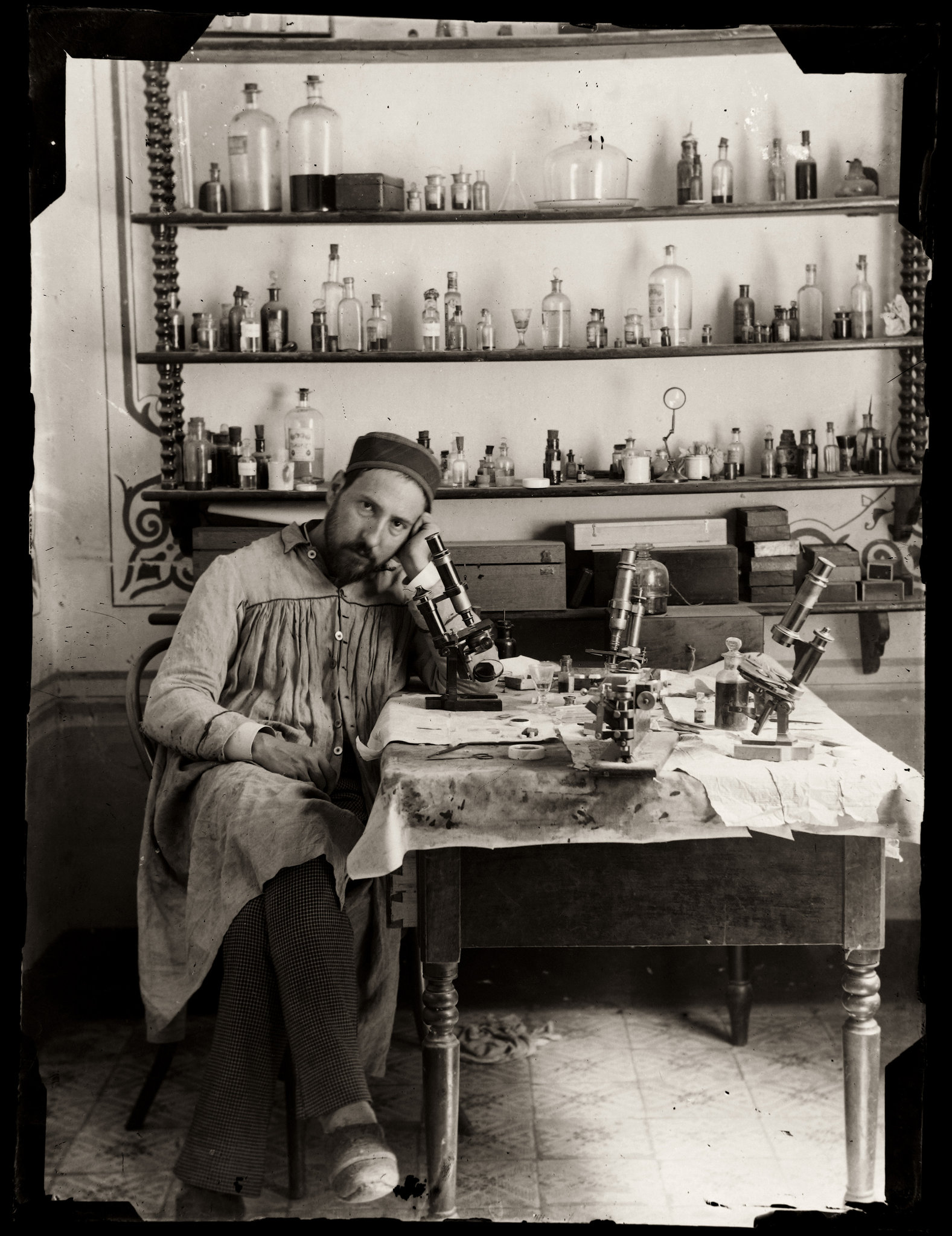Some microscopes today are so powerful that they can create a picture of the gap between brain cells, which is thousands of times smaller than the width of a human hair. They can even reveal the tiny sacs carrying even tinier nuggets of information to cross over that gap to form memories. And in colorful snapshots made possible by a giant magnet, we can see the activity of 100 billion brain cells talking.
Decades before these technologies existed, a man hunched over a microscope in Spain at the turn of the 20th century was making prescient hypotheses about how the brain works. At the time, William James was still developing psychology as a science and Sir Charles Scott Sherrington was defining our integrated nervous system.
Meet Santiago Ramón y Cajal, an artist, photographer, doctor, bodybuilder, scientist, chess player and publisher. He was also the father of modern neuroscience.

A self-portrait of Ramón y Cajal in his laboratory in Valencia, Spain, about 1885.

